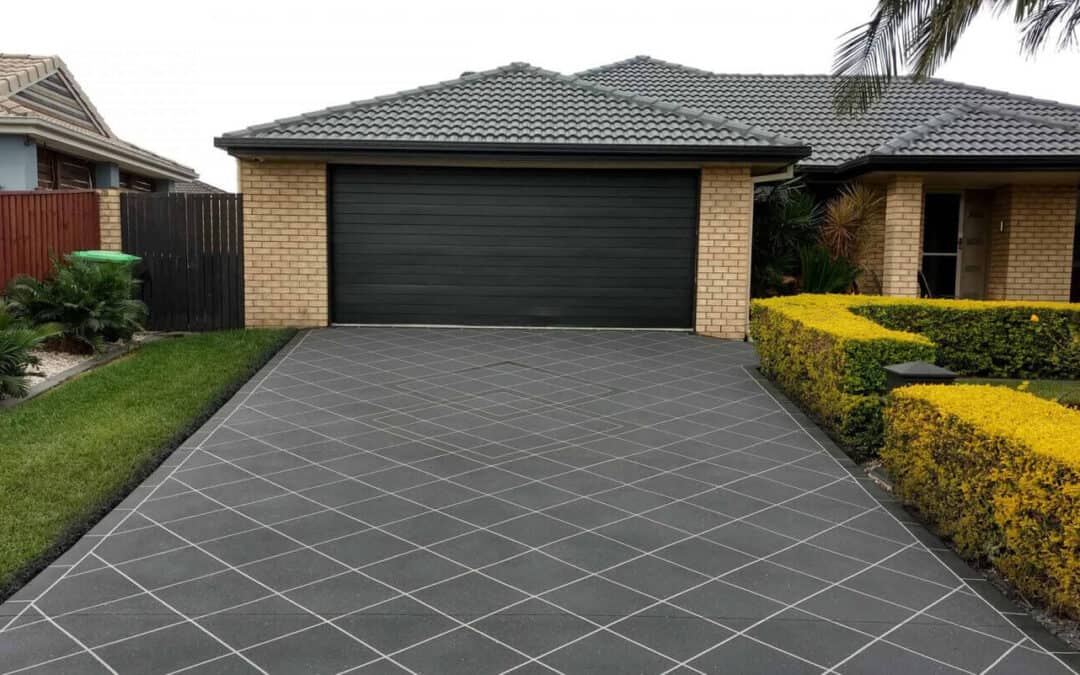There are noticeable differences that exist between competing polymer products in the concrete resurfacing and concrete restoration market. The industry as a whole has grown up and become more technologically advanced. The variations in the application as well as the performance range of polymer modified concrete range from excellent to mediocre.
One thing is for certain, Barefoot Concrete is right on top of the excellence list of delivering a flexible concrete resurfacing solution. To ensure that Barefoot Concrete’s flexible acrylic modifiers stay ranked at number one we are always looking at popular local products on the market and seeing what makes them work or not work.
This keeps our finger on the pulse as we seek to monitor the complexity of concrete resurfacing solutions and how they work. One big thing to come out of our evaluations is the importance of a good blend of cement, aggregates and additives, but most critical is the role of the cementitious polymer.
Decorative concrete resurfacing coatings, with rare exceptions, fall into the product family known as “polymer-modified concrete.” A polymer is a long molecule made up of repeating structural units. These can be both natural and synthetic. In the case of concrete coatings, we are dealing with synthetic plastic-based polymers.
To simplify what can be a complex chemical jungle, we just need to consider polymers used in concrete resurfacing as “glue” that provides adhesion within the overlay as well as adhesion between the overlay and the substrate.
This glue allows concrete coatings to go down thin and still stand up to high levels of traffic and harsh environmental conditions. The industry standard requires regular concrete to go down at a minimum of 5 centimetres. Typical concrete resurfacing applications range in thickness from 1-3 millimetres.
We all should know that the large aggregate bound by the cement paste is what gives concrete its strength properties. Since concrete resurfacing coatings are so thin, they do not have any large aggregate. This is where the polymer or acrylic modifier comes into play, giving strength to a thin cement-based product – in essence, replacing the larger stone.
There are two common acrylic modifiers used by most concrete resurfacing manufacturers: ethylene-vinyl acetate (EVA) and acrylic.
EVA is actually a blend of ethylene acetate and vinyl acetate. Ethylene-vinyl acetate (EVA) comes in both dry powder and liquid emulsion form. This means EVA-based overlay systems can be “wet” or “dry.”
A wet system is when the polymer is in liquid form, mixed with the powder at the job site. A dry system is when the polymer is a dry additive premixed into the powder and the whole system is activated by adding water.
Vinyl is what gives EVA the properties that are so beneficial to both cement-based micro toppings and stampable overlays. It makes the concrete coating more plastic, flexible and durable, not to mention sticky – like glue. It also gives the overlay a more synthetic, rubbery look, which may not be to everyone’s liking.
EVA-based overlay systems make great toppings for projects when protection from freeze-thaw, chemicals, or everyday soils and contamination is important. EVA is the most common form of polymer used in decorative concrete resurfacing coatings based on its cost-to-performance ratio. If the liquid polymer you happen to use as part of your resurfacing system smells like the white glue you used in grade school, then it’s a pretty good bet it’s EVA.
Acrylic polymer used in concrete resurfacing coatings is different from EVA in that it is only available in liquid form and has a much smaller market presence. It produces a much more rigid and hard-finished overlay product.
In our research, we have found that acrylic polymers make for great coatings for interior applications. Acrylic polymers tend to produce concrete coatings that look and feel much like traditional concrete. You do not have the synthetic look and feel that sometimes comes with the EVA systems.
Much like Plexiglas, which is clear acrylic in sheet form, acrylic-based overlay systems are rigid, durable and tough, but are not very flexible. This is why we don’t recommend them for projects where flexibility is important.
With all the focus on polymer types and properties, the dry side of decorative concrete resurfacing systems can get minimized. It is important to note that having the right blend and type of aggregates is as important as having the right polymer. While the polymer is what gives the overlay most of its strength and adhesion properties, it will not make up for a poor mix design on the dry side.
The mix is more than sand and cement. In fact, we have found some popular coating systems that had no less than seven different dry ingredients, each one adding a nuance or performance characteristic specific to that system.
There are many brands of decorative concrete resurfacing systems to choose from, each one unique. We encourage you to do your own research and ask lots of questions to discover if the brand or product you are using is best suited for your specific application.
The polymers you use combined with the proper mix of dry ingredients makes products as diverse as the applications you use them for. Don’t settle for the one-size-fits-all approach when it comes to decorative overlays.
If you are not sure, speak to an expert, we are here to help you, contact Barefoot Concrete today.

